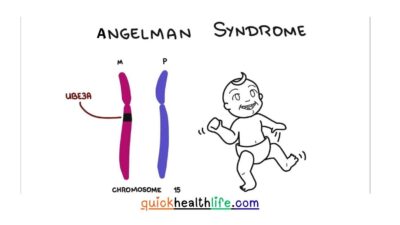What is a Brain Aneurysm?
A brain aneurysm is a bulge or balloon-like swelling in a blood vessel in the brain. It happens when the walls of the blood vessels become weak. Most brain aneurysms don’t cause symptoms and may never rupture. But if it does burst, it can lead to a serious condition called hemorrhagic stroke, which is life-threatening.
Table of Contents
Brain Aneurysm Symptoms
Brain aneurysms are tricky because in many cases, they do not show any symptoms until they rupture. However, some unruptured aneurysms may press on brain tissues or nerves and cause warning signs.
Common Symptoms of Unruptured Aneurysm:
- Headaches (mild to severe)
- Blurred or double vision
- Pain above and behind the eye
- Dilated pupils
- Weakness or numbness in one side of the face
Symptoms of a Ruptured Aneurysm
- Sudden and severe headache (often described as the “worst headache of life”)
- Nausea and vomiting
- Stiff neck
- Seizures
- Loss of consciousness
- Sensitivity to light
- Drooping eyelid
👉 If someone experiences these sudden symptoms, it is a medical emergency. Immediate hospital care is needed.
Read More: Alkaptonuria Symptoms, Causes, Diagnosis, Treatment & FAQ
Causes and Risk Factors
A brain aneurysm develops when blood vessels in the brain become weak. But why does this happen? Let’s break it down.
Main Causes:
- Weak blood vessel walls (can be present from birth or develop over time)
- High blood pressure (extra pressure weakens the vessels)
- Atherosclerosis (fat buildup in arteries)
- Head injury or trauma
Risk Factors That Increase Chances:
- Age: More common in adults over 40
- Gender: Women are at slightly higher risk
- Family history: If parents or siblings had it, risk increases
- Smoking: Damages blood vessels
- Excessive alcohol or drug use (especially cocaine)
- Certain conditions: Polycystic kidney disease, connective tissue disorders
How to Diagnose Brain Aneurysm?
Since aneurysms often remain silent, they are usually found during tests for other problems. However, if doctors suspect it, they use advanced imaging techniques.
Common Tests :
- CT Scan (Computed Tomography): Helps detect bleeding in the brain.
- MRI (Magnetic Resonance Imaging): Provides detailed brain images.
- MRA (Magnetic Resonance Angiography): Focuses on blood vessels.
- Cerebral Angiography: A special dye is injected to highlight blood flow in brain arteries.
- Lumbar Puncture: Checks for blood in spinal fluid if CT is unclear.
Read More: Alzheimer’s Disease: Symptoms, Causes, Diagnosis, Treatment, and Prevention
Treatment and Surgery
Treatment depends on the size, location, and whether the aneurysm has ruptured or not.
For Unruptured Aneurysms:
- Monitoring: Small aneurysms may just be observed with regular checkups.
- Medications: To control blood pressure and reduce rupture risk.
Surgical Options:
- Clipping Surgery: A metal clip is placed at the base of the aneurysm to stop blood flow.
- Endovascular Coiling: A minimally invasive method where coils are inserted into the aneurysm to block blood flow.
- Flow Diversion Devices: Stents are placed to divert blood flow away from the aneurysm.
For Ruptured Aneurysms:
Immediate surgery or endovascular treatment is done to stop bleeding. Patients are also given medicines to control pain, prevent seizures, and manage complications.
Brain Aneurysm vs Stroke
Many people confuse brain aneurysm with stroke. While they are related, they are not the same.
- Brain Aneurysm: A weak blood vessel bulges and may burst.
- Stroke: Can be caused either by a blocked blood flow (ischemic stroke) or by bleeding (hemorrhagic stroke).
Read More: Alcohol Misuse: Risks, Treatment, Symptoms, Types, Causes
Complications of Brain Aneurysm Rupture
A burst aneurysm can cause serious problems:
- Re-bleeding: The aneurysm may bleed again.
- Vasospasm: Blood vessels narrow, reducing blood flow to brain.
- Hydrocephalus: Fluid builds up in the brain.
- Seizures
- Brain damage or coma
- Death in severe cases
Can You Survive a Brain Aneurysm?
Yes, survival is possible – but it depends on quick medical help.
- Unruptured aneurysm: Many people live normal lives with monitoring or treatment.
- Ruptured aneurysm: Around 40% of cases are fatal, but survival chances increase if treated immediately. Early surgery, proper ICU care, and rehabilitation improve recovery.
Many survivors may face long-term challenges like memory issues, speech problems, or weakness – but rehabilitation therapies help a lot.
Prevention Tips
While not all aneurysms can be prevented, you can reduce the risk by keeping your blood vessels healthy.
Practical Prevention Tips:
- Control blood pressure
- Quit smoking
- Limit alcohol
- Avoid recreational drugs (especially cocaine)
- Eat a balanced diet rich in fruits and vegetables
- Exercise regularly
- Manage stress effectively
- Go for regular health checkups if you have a family history



